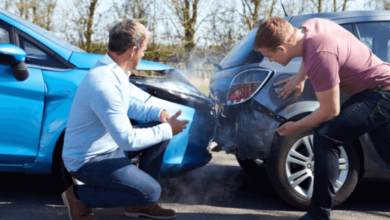The Dangers Women Face in Public Spaces

Walking down the street, enjoying a coffee, or even taking a rideshare—activities many take for granted—can be dangerous for women. Today, amidst thousands of people, women often feel unsafe due to the continued fear of stalking, groping, and abuse.
Millions of women face this harsh reality daily. The World Health Organization (WHO) reports that 1 in 3 women worldwide experience physical or sexual violence in their lifetime. This threat permeates public spaces, from city streets to quiet neighborhoods. Women frequently face assault and harassment, often by people they know.
This shows crimes against women are not isolated incidents but are rooted in deep-seated gender inequality and harmful social norms. It’s time to shed light on this pervasive issue and explore how to reclaim our right to safety in public spaces.
Types of Violence Against Women in Public
The threat of violence against women in public spaces manifests in numerous forms, often leaving lasting scars. Understanding the spectrum of these dangers that profoundly affect women’s lives is crucial.
Physical Violence
Physical violence against women in public spaces is far more prevalent than we acknowledge. Shockingly, in the U.S., nearly 20 people are physically abused by an intimate partner every minute. This resulted in over 10 million women and men suffering abuse annually.
However, this violence doesn’t only occur behind closed doors. Women frequently face harassment in broad daylight—on our streets, in our parks, and on public transportation.
They are being groped, shoved, and even physically assaulted. Studies have shown that Black, Latina, and White women are more susceptible to street harassment in respective racial and ethnic groups.
It’s time to break the silence. We must speak out against this violence, hold perpetrators accountable, and demand safer public spaces for everyone. Let’s take back our streets and reclaim our right to move freely without fear.
Sexual Violence
Sexual violence is an epidemic plaguing public spaces. Catcalls echo down sidewalks; unwanted hands violate personal boundaries in crowded areas. These seemingly “minor” incidents can escalate into more severe forms of assault, leaving victims traumatized and afraid.
Studies reveal that approximately 29% of women worldwide have experienced some form of sexual violence in their lifetime. However, it’s not just about the numbers but the stories behind them. It’s about the woman who feels unsafe taking public transportation or the girl who fears walking home alone due to catcalling. Countless survivors of sexual assault carry the burden of trauma for years.
Even ride-hailing services like Uber, despite their convenience, have become hotbeds of sexual violence. The space, power imbalance between driver and passenger, and anonymity of the service create a situation for harassment and assault.
Yes, sexual harassment in cabs is far too common in the United States. Consider the example of Lyssa Broomfield, a young Los Gatos woman who recently moved to Los Angeles. Celebrating this new phase of her life, Broomfield was out with friends at a nightclub, where she drank all night. As she decided to head home, she called an Uber.
“I opened the back door, but the driver said, ‘No, that’s okay. Just come in the front,'” Broomfield recalled. “From then on, it’s a blur. The one thing I remember the most is just being in some random parking lot.”
Police investigations revealed that Broomfield was picked up at 1 a.m. and dropped off at 6:20 a.m. That means she was on Uber for five and a half hours. At the police’s request, Broomfield texted the driver, asking what had happened that night. When she wrote, “I don’t remember that night,” he replied, “Oh, I believe you.”
Despite wanting to press charges, attorneys informed Broomfield that there wasn’t enough evidence to prosecute the driver.
Lyssa Broomfield’s case is just one among many. Similar incidents of women facing harassment and assault from ride-hailing drivers have been reported across the United States. As of June 2024, TorHoerman Law notes that the JPML shows 276 cases in the Uber Technologies, Inc., sexual assault litigation.
Numerous survivors have filed lawsuits like the Uber sexual assault lawsuit, holding the company accountable for failing to protect its passengers. Their stories expose the dark underbelly of an industry that often prioritizes profits over people.
However, the problem extends beyond individual bad actors within the industry. Normalizing sexual harassment in society at large contributes to this issue. When unwanted advances and sexist jokes are dismissed as harmless, a culture fosters where more forms of violence can flourish.
Psychological Violence:
While physical violence may leave visible scars, the wounds of psychological violence run deep and can be equally devastating. These scars are inflicted through words, threats, and intimidation, leaving women feeling vulnerable and afraid.
Approximately 78% of women who have faced physical and sexual violence—in both childhood and adulthood—have experienced severe psychological trauma. And 16% of women developed Post-Traumatic Stress Disorder (PTSD).
Verbal abuse is a prevalent form of psychological violence. It can range from insults and derogatory comments to threats of harm, leaving victims feeling humiliated and devalued. In extreme cases, it can escalate into stalking, where victims are relentlessly harassed and monitored, shattering their sense of security.
However, psychological violence isn’t always overt. It can be subtle, manifesting as controlling behavior, gaslighting, or isolation from friends and family. These tactics gradually erode a woman’s self-esteem, leaving her feeling powerless and trapped.
FAQs
What Are the Social Issues of Women’s Safety?
Women’s safety is a pressing social issue globally. It encompasses various forms of violence faced by women, including sexual assault, domestic violence, and street harassment. This issue limits women’s freedom of movement, participation in public life, and overall well-being.
What Makes Women Feel Unsafe in Public?
Women often feel unsafe in public due to the threat of harassment, assault, or unwanted attention. This fear can be exacerbated by poorly lit areas, isolation, and a lack of visible security presence.
How to Stay Safe in Public?
Be aware of your environment and belief in your instincts. Avoid gloomy areas, especially in the dark and walk confidently and purposefully. If you feel unsafe, seek a populated area or call for help, keep valuables out of sight and be cautious with strangers.
The dangers women face in public spaces are pervasive and deeply rooted in societal issues. However, by understanding these threats, we can begin to dismantle them. We must challenge the mix of gender inequality and the normalization of violence that makes women targets.
Awareness alone is insufficient; we must act. Speak up when you witness harassment, and support organizations working to end violence against women. Also, advocate for policy changes that prioritize women’s safety.
The government has also started addressing women’s safety. Recently, the U.S. government introduced the United States Strategy to Prevent and Respond to Gender-Based Violence Globally (2022).
This strategy outlines a multi-pronged approach aimed at preventing violence against women, supporting survivors, and promoting gender equality. It recognizes that ending gender-based violence requires a concerted effort from all sectors of society, both domestically and internationally.
Moreover, the Department of Justice has established the Office on Violence Against Women (OVW) to reduce violence against women. The administration will strengthen communities and provide services to victims of domestic violence, sexual assault, dating violence, and stalking.





